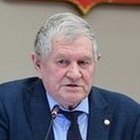‘It will take the sector much time to recover’ — rubber producers reducing load
Russian rubber market, as well as the entire global chemical industry, has showed a decline in production in the first quarter of the year. This is how the industry is responding to declining demand, a slowdown in the auto industry, a trade war between the United States and China, and the coronavirus pandemic that has caused major consumers to shut down production. Despite the difficult situation, the largest rubber producer in Russia, Nizhnekamskneftekhim (part of TAIF Group), intends to implement the investment projects announced for the coming years. In particular, the construction of divinyl-styrene synthetic rubber production with a capacity of 60,000 tonnes a year is entering to the final stretch.
Russian rubber market has slowed down
Synthetic rubbers are petrochemical products of strategic importance for the Russian economy. Despite our country's attempts to produce natural rubber from dandelions, the experiment turned out to be economically impractical: Russia simply does not have enough dandelions to produce the necessary volumes of rubber. At the same time, our country, rich in hydrocarbon raw materials, has a great potential for the development of the industry of synthetic rubbers (SR). Every year, up to 80% of domestic synthetic rubbers are sent abroad, where they produce a large number of tyres of well-known automobile brands. Emphasising the importance of synthetic rubber production, Russian Deputy Prime Minister Yury Borisov has recently instructed to address the issue of purchasing SR for Rosrezerv.
In the first quarter of 2020, according to Rosstat data on the release of important products, domestic enterprises produced 404,000 tonnes of synthetic rubbers in primary forms, which is by 0,7% less than in the previous year's same period. In 2019, the output of all types of SR in Russia amounted to 1,318,000 tonnes (-5% by 2018), the consumption decreased to 394,000 tonnes (-16% by 2018).
The decline in production reflects a global trend that has increased with the onset of the coronavirus pandemic — a decline in demand for rubbers. In March, the production of synthetic rubbers in the world decreased by 6,6%, reported American Сhemistry Council (ACC). This situation in the market of synthetic rubbers, which is already highly competitive due to excess production capacity in the world, has further exacerbated the struggle for a buyer of SR.
Nevertheless, domestic products are in steady demand in export markets. At the end of last year, almost 75% of the total production of SR in the country went abroad. For example, one of the largest petrochemical companies in Europe — Nizhnekamskneftekhim PJSC — produces 68% of Russian rubbers, which is more than 12% on the world market (by types of rubbers produced by Nizhnekamskneftekhim PJSC). In 2019, the company produced 679,000 tonnes of rubbers, 88% of which were sent abroad, the remaining 12% were sold on the domestic market.
In addition to Nizhnekamskneftekhim PJSC, synthetic rubbers in Russia are also produced by the following companies, which account for a total of 32% of the country's production (by type of rubbers produced by Nizhnekamskneftekhim PJSC): Krasnoyarsk Synthetic Rubber Plant (SIBUR Group), Voronezhsintezkauchuk (SIBUR Group), Ufaorgsintez (Rosneft), Sterlitamak Petrochemical Plant (TAU NEFTEKHIM Group), Sintez-Kauchuk (TAU NEFTEKHIM Group), Omsk Kauchuk (TITAN Group), Tolyattikauchuk (Tatneft), Efremov Synthetic Rubber Plant (Kaiser Partner PrivatBank AG), Kazan Synthetic Rubber Plant (VEB.RF).
In the overall sales structure of Nizhnekamskneftekhim, synthetic rubbers accounted for 43% of annual revenue in both global and domestic markets, plastics accounted for 32%, and other products accounted for 25% of revenue.
According to the company's annual report, Nizhnekamskneftekhim is the world leader in the production of synthetic isoprene rubbers with a 43,9% share in the global market, the world's third supplier of butyl rubbers with a 17,5% share and a 5,3% share in butadiene rubber production. The product range includes more than 120 items. The company exports its products to more than 50 countries in Europe, America and Southeast Asia.
Decline in the global auto industry and falling demand for rubbers
In 2005, the total global consumption of natural and synthetic rubbers was 21 million tonnes, and by 2018 it had grown to 28,6 million tonnes. But these are particularly difficult times for the rubber industry. Against the backdrop of a slowdown in the global economy, demand for products has decreased. The decline in the global automobile industry and the decline in natural rubber prices had a negative impact, which strongly affects the price of synthetic rubbers.
The cheaper natural rubber has led to a synchronous decrease in prices for synthetic analogues — isoprene rubbers. The thing is that the market of natural rubbers is characterised by high price volatility. Depending on yield and other factors, the cost of NR may fall to $600 per tonne or grow to $6-7 thousand per tonne. In the context of rising prices, rubber consumers are forced to change the operating mode of equipment or even replace it in order to increase the share of synthetic rubbers. The procedure is not fast, but there is no choice: in order not to halt production and maintain its profitability, factories have to adapt.
Natural rubber is expensive and difficult to extract, rubber trees begin to give juice only 7 years after planting. Natural rubber is even more difficult to process. NR processing requires large volumes of water and chemicals, and the process generates a lot of solid and liquid waste. Waste water from factories contains acids and is a threat to the environment. Often they are dumped into rivers, which leads to the death of fish and the spread of an unpleasant smell for many kilometres around.
Deforestation of natural forests for rubber-bearing plantations is also a big problem, and valuable palm groves are being destroyed. The jungles of Thailand, China, Laos, Cambodia, and Myanmar (the main suppliers of NR), with their unique flora and fauna, are gradually shrinking due to the planting of more hevea for rubber production. If the situation is uncontrolled, in 30 years the area of deforestation in these countries will grow 2-3 times, which will cause serious damage to the environment.
Understanding the scale of the problem and in order to avoid even more harm to nature, the main consumers of NR in November 2017 created Global Platform for Sustainable Natural Rubber. The purpose of the platform is to form a responsible attitude to the production of NR, that is, to ensure a responsible approach to the creation of plantations: not to plant all areas in a row with hevea, stop deforestation, etc.
Meanwhile, the chemical industry offers many different types of synthetic rubbers that are superior in some properties to natural rubber. For example, natural rubber has a sweet-cloying smell and does not hold its shape well, it melts at room temperature, so it is stored in the cold. Unlike NR, synthetic rubber is odorless and retains its shape well. Besides, it does not need to be pre-plasticised like natural rubber, since it is produced with a sufficiently high plasticity. However, natural rubber has other distinctive advantages. For example, high frost resistance: the product from NR retains elastic properties at temperatures up to -70 degrees. Experts have no doubt that the industry will soon offer the same frost-resistant artificial rubber.
Natural rubber is almost universal, it is used to produce all kinds of mechanical rubber goods, whether it is rubber nipples, toys, cameras, tyres, and more. Synthetic rubber has to be customised for each product. However, for the production of tyres, synthetic rubber is best suited. Passenger cars contain more SR, while trucks contain more NR. Nizhnekamskneftekhim's isoprene rubbers are in high demand because the manufacturer sets all the required product characteristics in advance using catalysts and technologies. Where particularly strong tyres are needed, only synthetic rubber is used. For example, Formula 1 and Dakar racing cars win rallies including thanks to tyres made of Tatarstan rubber with Nizhnekamskneftekhim.
Out of all synthetic rubbers, isoprene rubber is the closest in properties to natural rubber. Rubbers made of isoprene rubber are characterised by high mechanical strength and elasticity. Natural rubber is replaced by isoprene rubber in the production of tyres, conveyor belts, rubbers, shoes, medical and sports products. Isoprene rubber is easily mixed with ingredients and other rubbers. Under load, synthetic rubber is deformed, but after the impact is stopped, it returns to its original form, which allows the use of isoprene rubbers in the production of tyres to ensure a high level of grip.
In 2019, the economic situation of the isoprene rubber market was determined by demand from the tyre industry and natural rubber prices, which are a benchmark for isoprene rubber prices. The average price for natural rubber in 2019 rose by 3% compared to the previous year. Amid this rise, the price for isoprene rubber also increased by 3% last year against 2018. Nevertheless, the price for crude hydrocarbon to make isoprene rubber was still high compared to natural rubber rates, and this reduced the effectiveness of isoprene rubber sales. Despite this, in 2018 Nizhnekamskneftekhim PJSC met all commitments in contracts it signed.
Last year, according to OICA (International Organization of Motor Vehicle Manufacturers), car production dropped by 5,1% last year, to 91,8 million units. The organisation specifies that in 2019 car production shrank: by 7,5% in China, 9% in Germany, 3% in the USA, 13,8% in Italy, 2,9% in France, 0,5% in Japan, 2,8% in Russia. In 2020, car sales collapsed at the height of the coronavirus pandemic: by 80% in China in February, by 88,8% in France in April.
As a consequence, demand for tyres in 2019 went down: in OEM for cars and light vehicles — by 5% in Europe and North America on average, by 10% in China; in lorry tyres — by 8-9% in Europe. In retailing, the European car tyre market decreased by 2%, the North American market of lorry tyres — by 11%.
In 2019, in Russia, according to the Russian Federal State Statistics Service, tyre production reduced by 10%, to 60,5 million units (to compare, over a billion tyres is annually manufactured in the world). The share of tyre imports, according to the Federal Customs Service, in contrast, rose by 7,5%, to 34,4 million units, which is $2bn in monetary terms. This excludes tyres imported to our country with new cars, trailers, bicycles and other vehicles with wheels, which also have spare wheels. For instance, the share of car imports in Russia, as the Federal Customs Service says, also rose by 3,2% last year, to 302,500, the amount of lorries increased by 13,7%, to 29,900. It isn’t hard to calculate that another 1,66 million tyres were imported to our country in this segment (four wheels in the car and one spare wheel): 1,51 million of cars, 149,500 lorries.
The lower demand for synthetic rubbers led to stiffer competition and a reduction in prices for some types of products.
In early May, the Association of Natural Rubber Producing Countries(ANRPC) again reconsidered the outlook for the market next year. The association expects a reduction in production volumes by 2,3%.
According to the updated outlook of the ANRPC, natural rubber production volumes around the world might total 13,43 million tonnes later this year. A month ago, the ANRPC considered there would be produced 14,11 million tonnes of natural rubber in 2020. By the association’s estimate, consumption will reduce by 5,1%, to 13,02 million tonnes, though other volumes were named in the ANRPC in April — 13,5 million tonnes. The Association of Natural Rubber Producing Countries claimed that the biggest impact of the coronavirus was experienced in April, therefore a 6,4% reduction in production is expected in the first half of the year — to 5,6 million tonnes. Natural rubber production reduced by 3,6% during the first quarter of the year, to 2,9 million tonnes.
Big projects and new goals
In 2019, Nizhnekamskneftekhim completed the reconstruction of the isoprene-monomer plant. Isoprene is necessary to make synthetic rubber. The capacity of the plant after re-equipment was 333,000 tonnes a year. Unique production technology is designed to optimise costs on products made thanks to few stages of production and a low amount of feedstock, auxiliary material and energy consumption. However, in the current crisis around the world, these measures don’t even cover the prime cost of isoprene production.
Methanol, in turn, is necessary to make isoprene and synthetic rubbers. Earlier last year, Nizhnekamskneftekhim signed a contract with Haldor Topsoe from Denmark on a licence and engineering services in a project on a methanol plant with a capacity of 500,000 tonnes a year. Methanol is a feedstock to manufacture isoprene and synthetic rubbers. The launch of the factory’s own methanol production will allow reducing the prime cost of synthetic rubbers and increasing the economic effectiveness of its production in the future. With one’s own methanol production, one can develop a variety of new products where methanol is one of the key feedstock components. Making its own methanol, Nizhnekamskneftekhim will replace the feedstock it purchases, thus closing the whole feedstock cycle to make synthetic rubber. Railway traffic of the Nizhnekamsk hub will reduce, the environmental impact of loading and unloading will go down, new jobs will appear.
The company also mastered the production of a brand assortment of styrene-butadiene rubber (SBR) via solution polymerisation and improved butadiene rubber (SBR-N). The samples are tested by Russian and foreign consumers.
Moreover, NKNK modernises operating synthetic rubber plants. The complex making DSBR-777 rubber in the SBR-L was reequipped. The management of the company linked the enterprise’s development prospects with the implementation of big projects — the construction of a new olefin complex, creation of a new DSSR plant, construction of the methanol plant and construction of a new power plant CCGT-TPP to provide energy and increase the energy effectiveness of operating and future plants.
NKNK’s strategic development programme envisages achievement of the following indicators by 2030: growth of synthetic rubber production to more than 800,000 tonnes, methanol production to 500,000 tonnes, growth of ethylene production to 1,2 million tonnes and its own energy source 495 MW CCGT-TPP (according to TAIF and NKNK).
For Nizhnekamskneftekhim, 2019 became a year of promising investment projects and active work on improving the performance amid higher competition and a reduction in prices for petrochemicals. As a result, NKNK’s market capitalisation has grown by 56,2% since 2019 and reached a record indicator of 174,9bn rubles. At the end of the year, the company made 2,5 million tonnes of commodities, reached the highest ethylene, benzene, styrene, isoprene and isobutane production volumes. At the 14th open republican contest for the Tatarstan government’s award for quality, Nizhnekamskneftekhim received a became a laureate in Business Perfection nomination. Two products — general-purpose polystyrene 25FEB and bromobutyl rubber 232 were awarded 1st degree in The Best Goods and Services 2019 republican competition.
The economic state of the SR market worsened in 2019, rubber prices plunged. However, the high quality of Nizhnekamskneftekhim’s products, the status of guarantee supplier, strict compliance with buyers’ requirements and their interest in its rubbers provided the company with the possibility of maintaining the prices for SR in 2019 in general and prolonging contracts with key consumers to supply synthetic rubbers in 2020. Outlined positive factors also inspired hope. Judging by an upsurge of sales in regional car markets at the end of the year, 2020 also promised growth. However, the coronavirus pandemic rapidly seized the world and landed a serious blow on the real economic sector.
Forced pause for COVID-19
With the imposition of anti-epidemic restrictions by all countries from March to May, about 130 tyre factories around the world had to stop, the rest operated with a lower load. As a result, rubber shipping to tyre manufacturers who stopped the production reduced and was postponed.
“The disrupted logistics led to a surplus in enterprises’ warehouses. In this respect, Nizhnekamskneftkehim PJSC is taking all the necessary measures. The annual major repairs in synthetic rubber plants scheduled for April-May were put off to reduce supply at a low season. In addition, we are organising buffer warehouses in Russia and Europe, but the situation is very complicated,” Director General of Nizhnekamskneftekhim PJSC Ayrat Safin noted in an interview with Realnoe Vremya.
Nowadays the company is holding talks with consumers, agreeing with them on amounts of supplies and prices for products. This will allow loading existing capacities, save the staff and avoid lay-offs, provide the staff with salaries, which, in turn, will alleviate social tension not only in the enterprise but also in the city. Moreover, the conservation of the business of the budget’s core enterprise and biggest Russian rubber manufacturer has a strategic important meaning for the economy of both Tatarstan and Russia.
Nonetheless, serious consequences of the current crisis await the Russian industry. Many large enterprises introduced a reduced working week not to lay off the staff and save valuable workers. For instance, SIBUR switched to a four-day week to cut losses, its staff is about 23,000 people. The corporation is also reconsidering several projects and reducing expenses on contractors. Like most large industrial companies, Nizhnekamskneftekhim also considered a transition to a shorter working week in case the epidemiological situation in the republic worsened.
New rubber plants in Russia and around the world
The decline in the market and the coronavirus pandemic didn’t foil new rubber projects. For instance, Nizhnekamskneftekhim keeps implementing a project on another type of rubber that was announced earlier — divinyl styrene synthetic rubber (DSSR). The production will be launched till the end of the year. Like other rubbers made by the enterprise, this type of SR possesses valuable characteristics for tyre companies. Its special features provide better road adhesion, thus increasing a car’s safety.
Tyres made of this rubber are durable and allow saving fuel, as they have low rolling resistance, thanks to which petrol consumption decreases and the car’s eco-friendliness augments. DSSR will become an excellent foundation to create eco-friendly so-called green tyres, with improved performance characteristics, first of all, in traffic safety. Tyres made with this rubber are also notable for good wear resistance, frost tolerance and dynamic endurance. Construction and assembly works in the DSSR plant are 80% completed. Equipment was delivered and assembled.
NKNK’s opponents are also on the alert and launch new production capacities. So Voronezhsintezkauchuk launched a new type of highly viscous polybutadiene rubber earlier this year, which can be used in tyre production. The total production volume of polybutadiene rubbers will remain at the previous level — 96,000 tonnes a year, of which 20,000 tonnes will be manufactured according to new technology, the company says. Nizhnekamskneftekhim has been making the analogous rubber DSR-H with high viscosity since 2004. When the plant was put into operation, the installed capacity was 50,000 tonnes a year, but as a result of modernisation by 2016 the production volumes of DSR-H rose to 170,000 tonnes.
Ufaorgsintez developed six new types of ethylene propylene synthetic rubber (EPR). This type of rubber is used in the production of rubber commodities: nipples, belts, cushions, hoses for cars’ brake systems, in construction as a gasket, waterproof material and roofing. Moreover, Nizhnekamskneftekhim also plans to start the production of EPR in the long-term until 2030.
New rubber plants open abroad as well. In January, Iran launched the second line of Takht-E-Jamshid (TJPC) company making butadiene-styrene rubber with a capacity of 55,000 tonnes a year. The first line opened in February 2017, then the production of butadiene-styrene rubber with a capacity of 35,000 tonnes a year and units manufacturing butadiene rubber with a capacity of 18,000 tonnes a year began operating as well. Nizhnekamskneftekhim also plans to produce this type of rubber (BSR) until 2030.
This year, SIBUR and Reliance Industries Ltd. (India) plan to launch the production halobutyl rubber with Russian technology provided by SIBUR. The unit with a capacity of 60,000 tonnes will appear in the butyl rubber plant launched last year. The facility in Jamnagar is built partly with money of the participants in the joint venture and a loan of $330 million. This project will increase competition between Nizhnekamskneftekhim and the joint venture of SIBUR and Reliance Industries Ltd. in India and in the Asian market.
Thanks to the constant improvement of products made by Nizhnekamskneftekhim, rubbers remain highly competitive in the market and are recognised as one of the best in the world. The company keeps improving the quality of products, looks into the future with optimism and intends to hold its share in the market and gradually expand production volumes.
-
-

Maria Ivanova First Vice President of Russian Chemists’ Union
-
The outlook for the synthetic rubber market isn’t as optimistic as it was considered by experts in late 2019, and it will obviously be different from the numbers fixed in the road map of the development of the oil, gas and chemical complex of the Russian Federation through 2025.
In fact, unlike other types of polymers, the segment of the elastomer market is very export-oriented and accounts from 70% to 90% according to different types. Due to the economic and industrial situation because of the global pandemic, Russian synthetic rubber consumption suddenly reduced in world markets. Several industrial sites in our country had to forcedly begin technical and repair shutdowns earlier than scheduled this year. By the most careful estimates, we can expect the sales indicators comparable to last year’s ones to return only later this year.
This is why it is quite obvious that to support isoprene, butadiene and other manufacturers, including producers of special elastomer types, it is necessary, first of all, to stimulate higher demand in the domestic market by developing Russian production of rubbers, tyres, agricultural machinery, cars and so on. Such work requires serious support and attention from the country.
-
-
-

Rafinat Yarullin Director General of Tatneftekhiminvest-holding PJSC
-
Rubber manufacturers should look for new outlets, new areas where this product can be used. So Vietnam began making rubbers in large quantities, while the prices are falling. They fell lower during the coronavirus pandemic, in these conditions SR producers have to reduce the load.
Oil warehouses are full around the world due to a sudden fall in demand, Venezuela even began to dump oil into the sea — it is disgraceful! This is why, of course, it is necessary to reduce the load in SR plants, there is no choice. Apart from looking for new outlets, companies should improve characteristics of synthetic rubbers, achieve a higher quality of SR than those of natural rubbers so that they will be more expensive. This takes much time, not just a month.
-
-
-

Vasily Tanurkov Director of ACRA group of corporate ratings
-
It is hard to give somebody recommendations because for rubber manufacturers everything depends on a specific moment. They inevitably have to reduce the load — this is the market situation now, as car and tyre factories are also standing idle.
During a typical economic crisis, though there is a fall in the production of new cars and, consequently, demand from the car industry decreases, the market is usually supported by precisely demand for tyres to replace old ones. While tyres for already sold cars is a much higher demand for tyre manufacturers. So the situation now is completely different. It is clear that everybody is staying home in quarantine, nobody is changing tyres, they aren’t wearing out, demand has collapsed.
There has been an absolutely unusual situation for both tyre and rubber producers. Moreover, they find it quite hard to handle because it isn’t the production that can be readjusted. If there is a possibility of reducing the load or doing the major overhaul beforehand, it is the only correct solution.
As for outlooks, at the moment it feels like demand for rubbers won’t start rising either in June or July. Plus, the trajectory of the world economic recovery is unclear now. We will hope that as soon as the restrictions are lifted everywhere, everything will recover quickly, for instance, by the end of the year. Perhaps, demand for SR will reach the usual level, but there is no confidence in it. As consequence of the pandemic will cause serious financial problems among companies and banks, while this leads to quite a long period of economic decline in advance, this can influence the level of consumer demand. It is good if it reaches the level of 2019 by 2021. But it is a too optimistic scenario to hope that everything will return to the pre-coronavirus period in the sixth quarter of 2020. This happens if we are very lucky, but it will highly likely take the sector much time to recover.
-
-
-

Aleksandr Razuvayev Director of Alpari Information and Analytic Centre, Candidate for Economic Sciences
-
As soon as car plants and car shows open after the coronavirus restrictions are lifted, I think demand for rubbers will partly recover because sales of cars will resume, and car loans will be granted at lower rates. Nevertheless, I think that the world economy and demand will recover by the new year. Consequently, demand for SR will also significantly reach the previous volumes.
As for external markets, the ruble is now anyway cheaper — it is already quite serious support for exporters. Also, termless bonds have appeared now for any industry. There is quite a lot of money, but people are considering in what production it can be invested without risks. In this case, the republic can give them guarantees.
-
-
-

Aleksey Kalachev analyst at FINAM GC
-
Demand for rubbers won’t go down unless the economies of industrially developed countries begin to recover after the anti-COVID-19 restrictions are lifted. Rubber manufacturers turned out vulnerable to this crisis because the tyre industry is the main consumer of rubbers, while it has an obvious decline after the fall in car sales and, consequently, their production.
At the peak of the epidemic in China in February, new car sales in this market dropped by 80%. The peak of the fall in sales in Europe was in April: the car market in Germany reduced by 61,7%, car sales in France diminished by 88%, by 97,3% in Great Britain, by 97,6% in Italy, by 96,5% in Spain. Sales of new car and commercial vehicles even in Russia in April went down by 72,4% compared to last year’s April.
Rubber manufacturers will have to reduce the load of enterprises after tyre and car factories (though as early as in the first quarter of 2020, synthetic rubber production volumes in Russia were at the level of the first quarter of 2019). Warehouses with finished products aren’t endless and are designed for regular shipping. Most importantly, the amount of variable costs can reduce this way. Of course, constant costs will anyway stay during shutdown: rental, taxes, utility bills, loan and equipment leasing interest, payroll fund, pension and social contributions, all this won’t disappear. But at least costs on feedstock and electrical energy can decrease.
I am afraid it will be hard to make up measures stimulating the market. Demand for rubber in other sectors will unlikely cover the fall in demand from the tyre industry. When the epidemic is over, quarantine and travel restrictions are lifted, people will start travelling again, and transport companies will start transportation, demand for transport, tyres and rubber will recover. It is probably wrong to stimulate trips while the epidemic is not over.
While the outlook suggesting that markets will start recovering already in the second half of the year looks optimal now. If the world isn’t seized by a second wave of the pandemic in autumn, which, unfortunately, can’t be excluded completely, markets will reach a balance, while plants will already go back to the rhythmic operation by the middle of the next year.
-